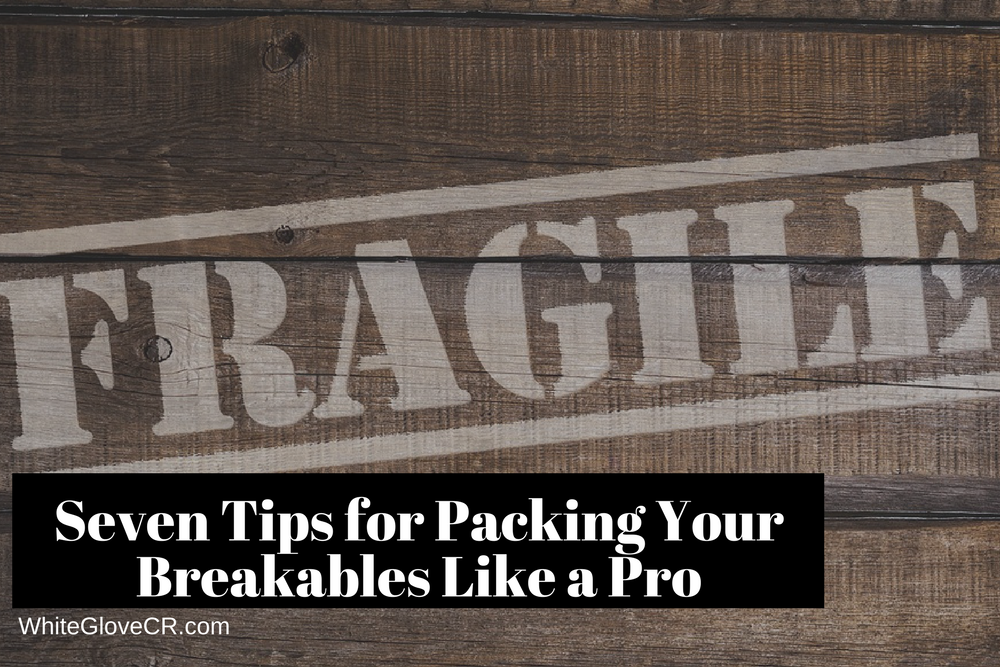If you have a move in your near future it’s important to remember that your breakable items are, well, breakable. If packed improperly, dishes can be easily cracked, mirrors can be reduced to shards, vases can be shattered, and antique heirlooms may become bits of dust. Since you’re thinking ahead about handling your delicate possessions, and how to avoid breaking them during your relocation, you’ll have to take some extra steps to store and pack them. To help you avoid having to clean up a mess, here are some tips for packing and storing your breakable items like a professional residential mover.
Save your fragile items for last. Most residential movers will tell you that packing your breakable items generally takes longer than packing your less delicate items. For this reason, you’re going to want to save your fragile pieces for last. If you pack everything else first, then you’ll have dedicated time to focus on properly packing your breakables.
Prevent any future trouble by packing your breakable items in appropriately sized boxes. Stuffing your fragile items into a box that’s too large can lead to overloading, which would make the box too heavy. Once you’ve secured the correct boxes from your residential moving company, store dishes, cups, and other small breakables in a dish pack. Dish packs are boxes that are made specifically for breakables. Dish packs feature thicker cardboard and typically have dividers that can be inserted to help absorb the shock of swift movements.
Be sure to sufficiently protect your breakables. When boxes are loaded into a residential moving truck or storage unit, they’re typically stacked several boxes high. While this is convenient for movers, it does make breaking your fragile possessions more likely. To ensure you’ve packed your breakables properly, start by packing each box with a soft layer of tissue paper, newspaper, or packing paper. This will serve as a shock-absorbing cushion. Then line each side of the box with crumpled paper to ensure your items are protected on all sides. Try to create a layer approximately 6 inches thick on the top and bottom of the box. Keep in mind that the box should be somewhat overfilled with your chosen cushioning material so that you can’t push it down easily after taping it shut. A good trick of the trade is if you can hear the items clinking around or rattling in the box, then there isn’t enough packing material inside.
Pack your boxes with the hardiest breakables at the bottom and the more fragile ones on the top.
Avoid leaving empty spaces in your boxes. Make sure you pack each box tightly and that you take the time to fill the empty spaces with other items or additional packing material to absorb the shock. Be aware that you can nest small wrapped items inside larger ones to create more support. If you still have empty spaces in your breakable items boxes, fill them with packing peanuts or pieces of styrofoam you purchased from your residential mover.
Any professional residential mover will tell you that the most important part of packing breakables is to wrap them individually. Start by placing your item in an upright position on a sheet of packing paper. Then thoroughly wrap the piece in paper and put another crumpled sheet of paper inside. Items like vases or jars should have tight layers of paper around them for increased protection.
Don’t be afraid to use lots and lots of tape! Packing tape is wider and stronger that other kinds of tape, therefore you should use it to tape the bottom and the sides of your boxes. If you feel it’s necessary, you can use other kinds of tape to make sure the ends are securely shut.


